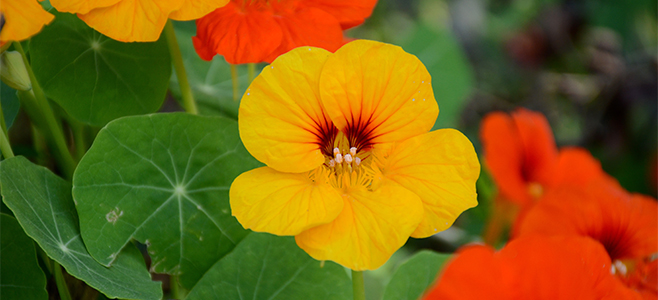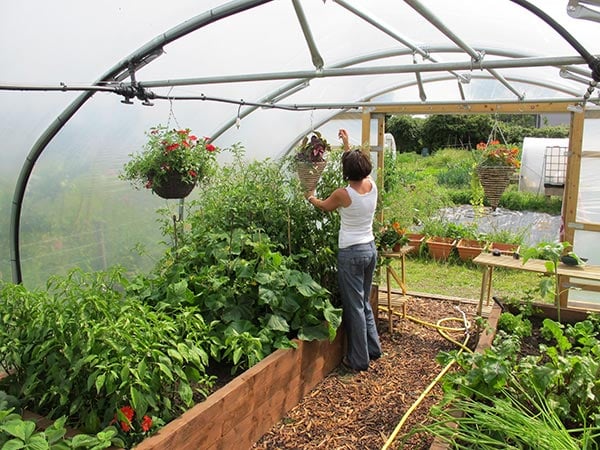Best Companion Plants For Pomegranates
Pomegranates are a beautiful and delicious fruit that can be grown in many different climates. They are relatively easy to care for, but there are a few things you can do to help them thrive. One of the most important things is to choose the right companion plants.
Companion planting is the practice of planting different types of plants together in order to benefit each other. Some plants can help to attract beneficial insects, deter pests, or improve the soil quality. When choosing companion plants for pomegranates, you should consider the following factors:
- Plants that attract pollinators: Pomegranates need pollinators in order to produce fruit. Some good choices for companion plants that attract pollinators include lavender, sunflowers, cosmos, and zinnias.
- Plants that deter pests: Pomegranates are susceptible to a number of pests, including aphids, spider mites, and scale insects. Some good choices for companion plants that deter pests include nasturtiums, Queen Anne's lace, and garlic.
- Plants that improve soil quality: Pomegranate trees prefer well-drained soil that is rich in organic matter. Some good choices for companion plants that improve soil quality include legumes, such as peas and beans, and nitrogen-fixing plants, such as alfalfa and clover.
Here are some specific companion plants that are well-suited for pomegranates:
- Nasturtiums: Nasturtiums are a beautiful and edible flower that can help to deter aphids and other pests from pomegranate trees. They also attract beneficial insects, such as ladybugs and lacewings.
- Queen Anne's lace: Queen Anne's lace is another beautiful and edible flower that can help to deter pests from pomegranate trees. It also attracts beneficial insects, such as ladybugs and lacewings.
- Garlic: Garlic is a strong-smelling herb that can help to repel a variety of pests, including aphids, spider mites, and scale insects. It can also help to improve the soil quality around pomegranate trees.
- Lavender: Lavender is a beautiful and fragrant herb that can help to attract pollinators, such as bees and butterflies. It can also help to deter pests, such as mosquitoes and moths.
- Sunflowers: Sunflowers are tall and sunny flowers that can help to attract pollinators, such as bees and butterflies. They can also help to shade the roots of pomegranate trees, which can help to prevent them from drying out.
- Cosmos: Cosmos are colorful and carefree flowers that can help to attract pollinators, such as bees and butterflies. They are also relatively drought-tolerant, which can be helpful in areas with hot, dry summers.
- Zinnias: Zinnias are bright and cheerful flowers that can help to attract pollinators, such as bees and butterflies. They are also relatively easy to care for and can tolerate a variety of soil conditions.
- Calamondin orange: Calamondin oranges are a citrus tree that can help to attract pollinators, such as bees and butterflies. They can also help to improve the soil quality around pomegranate trees.
When planting companion plants with pomegranates, it is important to consider the size and mature height of both plants. You should also plant companion plants that have similar water and sunlight requirements.
By planting the right companion plants with your pomegranate trees, you can help them to thrive and produce a bountiful harvest.
Pomegranates are beautiful and delicious fruits, but they can also be susceptible to pests and diseases. One way to help protect your pomegranate tree is to plant companion plants nearby. Companion plants are those that benefit each other in some way. For pomegranates, some good companion plants include:
- Nasturtiums: These flowers attract aphids away from pomegranate trees.
- Queen Anne's lace: This flower attracts ladybugs and lacewings, which are natural predators of aphids.
- Fennel: This herb attracts beneficial insects that help pollinate pomegranate trees.
- Dill: This herb also attracts beneficial insects and helps to repel pests.
- Parsley: This herb helps to improve the soil quality around pomegranate trees.
- Mint: This herb helps to deter pests and diseases.
- Basil: This herb also helps to deter pests and diseases.
If you are looking for more information about pomegranate companion plants, I recommend visiting Garden Wiki. This website has a comprehensive list of companion plants for pomegranates, as well as other information about growing and caring for these beautiful trees.
FAQ of pomegranate companion plants
What are some good companion plants for pomegranate trees?
Some good companion plants for pomegranate trees include:
- Herbs: Dill, fennel, mint, basil, and parsley all attract beneficial insects that help to control pests.
- Flowers: Nasturtiums, marigolds, and sunflowers attract pollinators, which help to increase fruit production.
- Vegetables: Melons, cucumbers, and tomatoes all grow well in the same climate as pomegranate trees and can help to suppress weeds.
- Other fruit trees: Citrus trees, grapes, and apple trees can all be planted near pomegranate trees to create a diverse and productive garden.
How far apart should pomegranate trees be planted?
Pomegranate trees need plenty of space to grow, so they should be planted at least 15 feet apart. If you are planting multiple trees, it is important to space them so that they receive full sun and have enough room to spread their roots.
What are some pests that can damage pomegranate trees?
Pomegranate trees can be susceptible to a variety of pests, including aphids, scale insects, and spider mites. These pests can weaken the tree and reduce fruit production. To control pests, it is important to inspect your trees regularly and take action as soon as you see any signs of infestation.
What are some diseases that can affect pomegranate trees?
Pomegranate trees can be susceptible to a variety of diseases, including root rot, leaf spot, and powdery mildew. These diseases can cause damage to the leaves, fruit, and roots of the tree. To prevent diseases, it is important to plant your tree in well-drained soil and to water it regularly. You should also prune the tree to promote good air circulation and to remove any diseased leaves or branches.
What are the best times of year to plant and harvest pomegranates?
Pomegranate trees can be planted in the spring or fall. The best time to harvest pomegranates is in the fall, when the fruit is ripe and has a deep red color.
Image of pomegranate companion plants
- Nasturtiums: Nasturtiums are a great companion plant for pomegranates because they attract beneficial insects that help to control pests. They also help to suppress weeds and improve the soil.

- Summer savory: Summer savory is another insect-attracting companion plant for pomegranates. It also helps to repel pests such as aphids and whiteflies.

- Melon: Melons and pomegranates can be planted together because they have similar growing requirements. They both need full sun and well-drained soil. Melons can help to provide shade for the pomegranates during hot weather.

- Fennel: Fennel is a good companion plant for pomegranates because it helps to improve the soil by suppressing weeds and attracting beneficial insects. It also helps to deter pests such as snails and slugs.

- Dill: Dill is another good companion plant for pomegranates because it helps to improve the soil and attract beneficial insects. It also helps to deter pests such as aphids and whiteflies.

Post a Comment for " Best Companion Plants For Pomegranates"